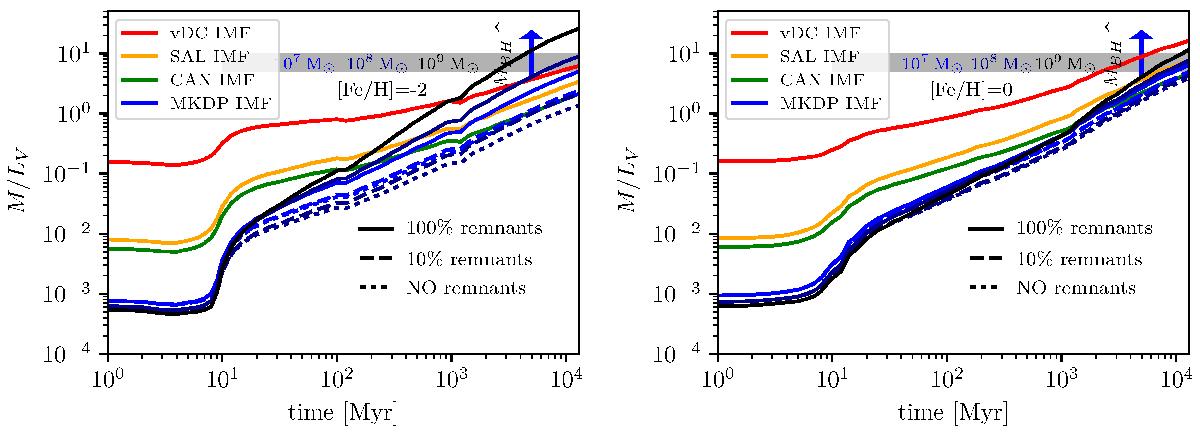Fig. 4

Time evolution of M/LV for all IMFs considered (vDC, SAL, CAN, MKDP). We assume that the system is gas free and that neither stars nor remnants are leaving (the dashed lines show the change of the M/LV value if only certain fractions of remnants are kept). The upwards-pointing blue arrow demonstrates that if we would assume more massive remnants (e.g. due to implosion directly to a BH without a SN explosion), then this would lead to larger values of M/LV. The models are computed for the case of MUCD = 109 M⊙, however, results are mass independent. The only exception is the MKDP IMF, which depends on initial object mass, MUCD, and also contains a large fraction of mass in high mass stars, and is plotted for MUCD = (109, 108, 107 M⊙, bottom to top) and different fractions of remnants retained (100%, 10%, 0%). Left panel: the evolution for [Fe/H] = −2. Right panel: the evolution for [Fe/H] = 0. The grey band indicates the span of the observed present-day M/LV values, approximately five to ten for the majority of UCDs (Mieske et al. 2008; Dabringhausen et al. 2009). The scales are identical for both panels.
Current usage metrics show cumulative count of Article Views (full-text article views including HTML views, PDF and ePub downloads, according to the available data) and Abstracts Views on Vision4Press platform.
Data correspond to usage on the plateform after 2015. The current usage metrics is available 48-96 hours after online publication and is updated daily on week days.
Initial download of the metrics may take a while.




